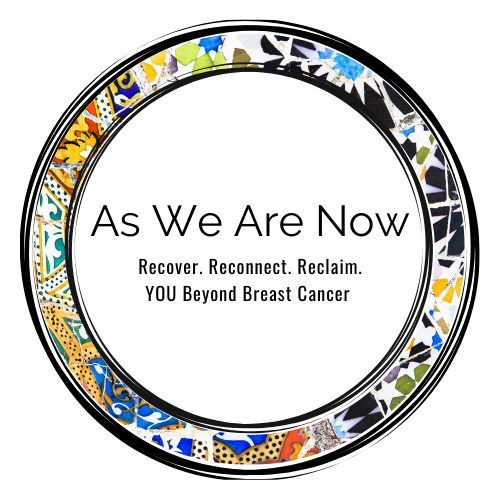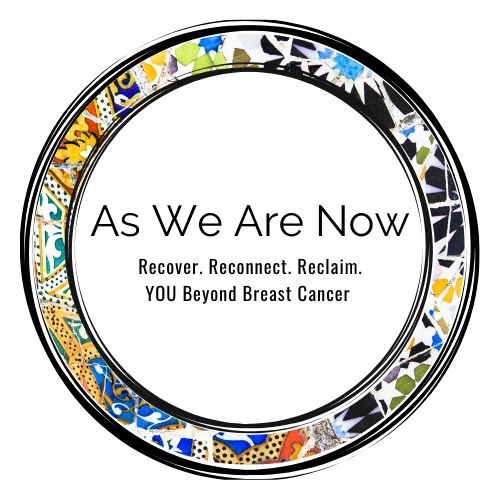Breast Cancer’s Best Kept Secret - How Understanding Your Risk of Lymphedema May Be the Key to Reducing it

“I had never heard of lymphedema until they told me I had it.”
“My doctor told me I would either get it or I wouldn’t but not much else.”
“They said I didn’t have to worry about it because I only had a sentinel node biopsy.”
“I’m ok because I haven’t gotten it by now so I’m in the clear right?”
I’ve been working in oncology massage and manual lymphatic drainage for 9 years. These are the things I've heard from people around the world who didn't know they were at risk for cancer-related lymphedema, or simply found out too late.
The crazy part? Almost every person who goes through treatment for breast cancer has some level of risk for developing lymphedema!
As a healthcare professional in integrative oncology, I’m frustrated by the lack of education around this condition within our community. As a woman at risk, and on behalf of every other person at risk or living with it, I’m mad as hell.
It’s time to change the narrative and start looking at lymphedema education from a proactive perspective.
What is lymphedema?
Lymphedema is a condition that can occur when there is disruption or damage to lymphatic structures such as lymph nodes and lymph vessels. Protein rich fluid that is usually cleaned, filtered, and processed via the lymphatic and cardiovascular systems can back up and become stagnant. In mild cases, this fluid back up may result in swelling, tightness, and discomfort. In extreme cases, it can result in fibrosis (hardening) of the tissue, loss of skin integrity (open wounds), and loss of limb function.
With breast cancer, this stagnant fluid and swelling typically occurs in the arm, hand, breast, and side-body on the treated side.
While there are types of lymphedema caused by genetic predisposition or parasitic disease, most cases in developed countries are from secondary lymphedema created by mechanical damage to components of the lymphatic system.
What does the lymphatic system do?
The lymphatic system plays a vital role in our overall health and wellness by balancing our body’s fluid load, stimulating immunity, and providing a built in method of detoxification.
Simply, it works to move fluid out of the "interstitial space" (a fancy way of saying the space between cells) and sends it along for cleaning and filtering. This thick, honey-like fluid is called “lymph” and is made up mostly of water, proteins, fats, and other cellular debris and waste products like bacterias, viruses, and abnormal or damaged cells such as cancer.
Lymph fluid makes its way through an intricate network of delicate vessels toward the heart, passing through our lymph nodes.
This helps:
- Filter out harmful materials in the fluid like cancer cells, bacteria, viral particles, and even dust and dirt
- Stimulate white cell production of lymphocytes and macrophages that fight off disease and pathogens thereby creating antibodies and building our immunity
- Thicken the lymph fluid by absorbing a portion of the water that can go back into the bloodstream reducing the fluid load in the body
When all is working properly, the fluid load in our body is balanced and our immune system works to keep us healthy. When it’s not, one result can be lymphedema.
Why is this a problem?
Secondary lymphedema is a chronic condition that, if left untreated, can result in debilitating pain, swelling, skin concerns, and even loss of function in the affected area.
At a minimum, people living with mild lymphedema have the discomfort, expense, and inconvenience of dealing with symptoms like aching, heaviness, swelling, tightness, or itching of the affected area. Managing these symptoms may require wearing compression garments or using mechanical pumps at home in addition to professional treatment. All of this inhibits the ease of daily life and can make enjoyable activities more difficult.
Those with advanced cases not only have more significant challenges and require more treatment but are also at higher risk for greater complications such as bacterial infections like cellulitis, which can be life-threatening.
How does breast cancer create lymphedema risk?
If we think of our entire lymphatic system as a machine, then each lymph vessel or lymph node is a component of that machine, nodes being a particularly important part.
Take away or damage any one part, let alone a collection of its parts, the machine might still work but has to work harder and may not function as well.
This is the case with some common breast cancer interventions.
Lymph Node Biopsy: Because cancer can spread via the lymphatic system, many people who receive a breast cancer diagnosis will have a sentinel node biopsy, where the lymph node closest to the tumor will be removed and inspected for cancer cells. This type of biopsy can include up to 5 or 6 nodes, not just one.
Lymph Node Dissection: Sometimes called a complete axillary dissection, this is when most or all of the lymph nodes in the armpit (axilla) are removed. This usually happens when the presence of cancer is indicated in any of these lymph nodes through imaging or biopsy.
Radiation Therapy: Despite its important purpose, radiation therapy tends to affect all cells that it comes in contact with, not just cancer cells. Radiation can damage the lymph nodes' ability to function properly and create fibrosis (scar tissue) in lymph vessels making it hard for the thick lymph fluid to move along.
With approximately 600-700 lymph nodes in the adult human (most located in the deep abdomen, head, and neck) you would think that a few missing from an armpit wouldn't make a huge difference.
But because the lymphatic system follows a very specific pathway for draining lymph fluid from each area of the body, any changes to its structure such as when lymph nodes and vessels are damaged due to removal or radiation, may cause the flow of lymph fluid to be impeded.
What does it mean to be “at risk”?
Lymphedema has stages much like a cancer diagnosis.
Stage 0 is commonly considered the “subclinical” or at-risk stage which basically means that the lymphatic system is compromised or damaged (such as from the cancer interventions mentioned above) but appears to be operating sufficiently. People in this category are living with a risk of lymphedema but do not have any signs or symptoms of the disease. While the risk never goes away, they may never actually experience lymphedema.
Stages I-III have progressively worsening symptoms and outcomes and require professional treatment along with at-home self-management.
What can I do if I’m at risk?
The first step is to seek help! While there are no guaranteed forms of prevention, knowing that you have a risk of lymphedema means that you have a head start at reducing your chances of actually developing the condition.
Find a trained professional in your area that specializes in lymphedema care who can perform a baseline assessment and provide information around self-care.
Your first choice may be a Certified Lymphatic Therapist (CLT). These are often Physical Therapists or Occupational Therapists who have completed a 135+ hour training program around lymphedema care and management. The gold standard is formal certification through LANA (Lymphology Association of North America) or attending a program that is LANA approved/accredited. CLT’s can be located in your cancer center or local clinics and may work with your insurance.
Another beneficial practitioner is someone who practices manual lymphatic drainage, a technique that is a component of complete lymphatic care that supports and stimulates the flow of lymph fluid. Called a Certified Manual Lymphatic Drainage Therapist (CMLDT), these are often licensed massage therapists practicing lymphatic care and/or oncology massage such as myself. This certification is a partial completion (95+ hours) of the same LANA programs mentioned above but with less advanced study in areas of wound care, wrapping, and garment fitting. Often found in private practice, these therapists are not always affiliated with insurance programs but may be able to see you on an ongoing basis without a referral.
Regardless of who you choose to see and work with it is important to confirm their credentials, training, and experience working with people affected by cancer and cancer treatment. The Lymphedema Education & Research Network (LE&RN) has many wonderful resources around lymphedema education along with this article on how to find a qualified therapist near you. And, when in doubt, ask your oncologist, nurse advocate, or other cancer care team member for a referral.
What if I think I’m already having symptoms?
Every body is unique and will react differently to various stimuli, but here are some of the things to be conscious of when they occur in your hand, arm, armpit, breast, or side body on your cancer side:
- Aching: you might experience a dull ache that comes and goes in waves or twinges
- Heaviness: your limb (arm/hand) might feel heavy compared to your other side or you might feel a heaviness or fullness in your breast or around your ribcage on your cancer side
- Tingling/Numbness: often associated with neuropathy, early symptoms of lymphedema can include tingling or numbness anywhere along affected area including the armpit
- Non-visible swelling: while you might not see a noticeable difference in size between your cancer side and non-cancer side, in the earliest stages you might feel a subtle difference, like jewelry, watches, or clothing fitting more snugly than normal
- Itching/Tightness of the skin: your skin might begin to feel or look tight or taut and create a bit of an itch if swelling is starting to occur.
While these symptoms can have other unrelated causes such as acute overuse or chronic nerve damage, if you are experiencing them it is a good idea to seek out one of the lymphatic care professionals discussed above if you haven’t already.
Lymphedema that is left untreated can advance to more difficult and chronic stages of the disease.
Stage 1 commonly includes visible swelling that may reduce with elevation or other intervention and you might notice "pitting" when pushing on the skin and tissue (leaves an impression that doesn't immediately fade). This stage is considered reversible with proper treatment or management including self-care.
Beyond this stage, lymphedema is considered spontaneously irreversible (meaning it will not resolve on its own without intervention) and will likely require continued treatment such as compression garments, wrapping, pumps, and decongestive therapy with a professional therapist.
Why isn’t this talked about more?
Pro-active education around the risk of lymphedema related to breast cancer is almost non-existent. More often than not, a person isn’t sent to see a lymphatic therapist until they have developed an actual problem.
One of the reasons that lymphedema risk may often be overlooked or dismissed is because there is not a lot of great information out there about who gets affected and why.
In theory, less damage to your lymphatic system means the less likely you are to develop lymphedema, and the greater the damage the more likely.
As an example, a person who had all of the lymph nodes removed and was treated with radiation on their cancer side is considered the most likely to experience lymphedema while a person who had a sentinel node biopsy of 1 or 2 nodes might have the least risk.
Unfortunately lymphedema doesn't play by the rules.
I have known women who had all of their axillary nodes removed AND radiation and never experienced lymphedema symptoms even after 30 years.
I have also known women who had two lymph nodes removed for biopsy without radiation and DID develop lymphedema.
For some, lymphedema develops right away, while for others it occurs after many years.
The statistics available vary wildly and almost every lymphatic therapist can tell you a story that defies the logic of who “should” get it and who “shouldn’t.”
The truth is, the study of the lymphatic system is relatively young in Western medicine compared to other structures and systems of the body. This includes oncologists whose work often directly impacts lymphatic function.
So what do I do from here?
Act on what is within your power!
- Find a professional! Establish a relationship with a Certified Lymphatic Therapist or Certified Manual Lymphatic Drainage Therapist and continue your education around additional self-care techniques.
- Learn your personal risk factors! Take into consideration not only what you personally have experienced in regards to your lymphatic system but other factors that can add to your risk like being sedentary and having a higher body mass index.
- Get familiar with triggers and their mechanisms! Understanding what may trigger a lymphedema flare up and why (you may have heard about blood pressure cuffs and blood draws being a no-no but there are many more) allows you to make informed daily decisions that are right for you.
- Get Educated! Knowledge is power and simply knowing you are at risk means you have taken the first step.
Final thoughts.
For a person impacted by breast cancer, the possibility of lymphedema should not be easily dismissed, but nor is it a foregone conclusion.
I admit it can leave me feeling defeated to hear the stories of those living with this condition when they didn’t even know they were at risk. But I also know that it doesn’t have to be this way. I have seen it with my clients and I have lived it myself.
Knowing that you have risk means you can do something about it. And that is the definition of empowered living when it comes to life beyond breast cancer.
 Amy Hartl lives at the intersection of personal and professional experience in breast cancer land. As both a BRCA1+ previvor-turned-survivor in 2017 and a practicing oncology massage and lymphatic drainage therapist for nearly a decade, she now specializes in helping women impacted by breast cancer take an active role in their own recovery and survivorship with the power of informed self-care. Through her online business As We Are Now LLC she brings the benefits of gentle touch, lymphatic support, and the mind/body connection into her clients’ hands through one-to-one virtual coaching sessions and survivorship consultations. Amy equips her clients with practical education, tools, skills, and resources to not only create increased comfort in their skin but to also reclaim the sense of self-reliance and self-confidence that cancer and cancer treatment often try to take away.
Amy Hartl lives at the intersection of personal and professional experience in breast cancer land. As both a BRCA1+ previvor-turned-survivor in 2017 and a practicing oncology massage and lymphatic drainage therapist for nearly a decade, she now specializes in helping women impacted by breast cancer take an active role in their own recovery and survivorship with the power of informed self-care. Through her online business As We Are Now LLC she brings the benefits of gentle touch, lymphatic support, and the mind/body connection into her clients’ hands through one-to-one virtual coaching sessions and survivorship consultations. Amy equips her clients with practical education, tools, skills, and resources to not only create increased comfort in their skin but to also reclaim the sense of self-reliance and self-confidence that cancer and cancer treatment often try to take away.
For more information on self-care education and support go to: www.amyhartl.com.




